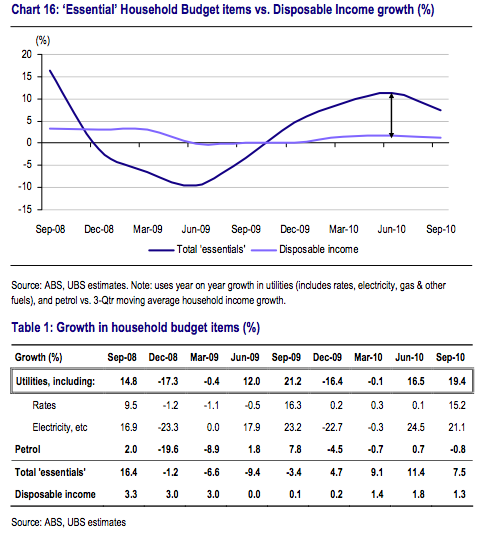![EATEN-OUT_FRASER-ANDERSON3[1]](https://www.macrobusiness.com.au/wp-content/uploads/2011/06/EATEN-OUT_FRASER-ANDERSON31.jpg)
Yesterday Deep T wrote a thought provoking piece about the responsibility of governments at all levels and their part in the ever increasing prices of houses in Australia. As part of that post he said.
It should come as no surprise that the main instigator in this part of the equation is state and local governments who in their search for ever increasing revenues fill the gap. How? As Australia does not have a housing shortage, this perhaps would seem difficult. State government policy (and local) by not actually limiting available land in total but manipulating land releases to all but eliminate proper competition maximizes demand and price for new land on a consistent basis. As state governments revenues are highly dependent on land values why would you not do it this way, especially since the banks and the federal government oblige with their policies to maximize the MMHP. To put the final nail in the “Who’s responsible” coffin, local governments come to the party by maximizing charges and conditions to rip as much as the developer and buyer/borrower can pay in the price of the land. Revenue raising by local authorities allowed for in the system created by both federal and state levels of government.
The trouble for all levels of government now is that housing transactions are slowing, and the revenue being generated by the housing market is therefore falling. For local and state bureaucracies that have slowly but surely expanded over the last decade on the back of that money there is now an issue of revenue. I have mentioned this issue previously, and most recently while discussing the friction between the WA and Federal government over funding.
It seems however that a number of councils along with their associated state governments have come up with a novel idea to keep the gravy train on the track. Decoupling rates rises from both the inflation rate and the housing market.
From Darwin:
DARWIN ratepayers will be slugged an extra 4.5 per cent on their rates – even though the value of their properties are falling. Darwin City Council has released its 2011/2012 budget today – showing they have $40million in assets and investments.
But home owners will still be slugged an extra 4.5 per cent on their council rates – more than 1 percentage point higher than the 3.3 per cent inflation rate. This comes at a time when property values across the city are falling. The median property price fell 2.5 per cent in the March quarter alone.
The council has raised rates significantly higher than the level of inflation for a number of years in a row. Rates rose 5.5 per cent last year and 6.9 per cent in the previous year.
Darwin Lord Mayor Graham Sawyer said this morning said the rate hike was “a fairly small amount of money”. He justified the cost by saying the rise of construction, road, and building costs are exceeding the CPI.
“Rates are a tax on service delivery for the city,” he said.
And from Brisbane:
Brisbane northside residents are fuming over Queensland Government land valuation hikes of up to 35 per cent in the face of a plunge in actual property prices.
Recently issued state government valuations for the Grange showed an average jump of 29.6 per cent in the 12 months to October, 2010, while median property values fell 5.8 per cent in Real Estate Institute of Queensland estimates.
In the neighbouring suburb of Gaythorne, average land values jumped by 26.5 per cent, compared with a 4.3 per cent drop in the median house price.
And Cairns:
Cairns Regional Councillors are struggling to limit rate rises to just 5% in line with the consumer price index as they try to produce a budget amid lower revenue streams and rising costs due to the summer’s natural disasters.
While some councillors want a rise of less than 5%, others are warning that keeping the rise around 5% is unsustainable. The Qld LGA has recommended that councils raise general rates by at least 7.5% independent of water rates. Cairns Regional Council revenue has reached an operating deficit of $5,033,063, more than $1.3m over budget forecasts.
Councils are expecting households to cough up as much as 55 per cent more for rates – while they push to give their own councillors a hefty pay rise. Auburn Council, in Sydney’s west, is set to give councillors the maximum rise possible under new Local Government Remuneration Tribunal guidelines as it seeks to hit ratepayers with a 54.8 per cent rate rise by 2015.
Sydney’s richest council, Woollahra, will consider its pay rise tonight after asking ratepayers to fork out an extra 21.25 per cent in rates over two years. They are the first in a flood of councils to consider salary increases after the tribunal set new maximum limits at 4.2 per cent.
Another 23 councils have applied for massive rate rises, and will consider pay increases in the coming weeks.
After reading that is isn’t hard to see why UBS are questioning the relative wealth of the average Australian with charts like the one below. You can see for yourself how the rates component of expenditure is effecting their estimates of the financial well-being of Australian families.

And that is the trouble with any credit driven asset bubble. It doesn’t just effect asset prices, it also becomes the vein that feeds so many other beasts. Once the transaction levels and then the prices begin to slide the complexes that have been built around the bubble become exposed. Expanding local councils and state government departments are a good example of this.
I expect to see some serious issues with council budgets “suddenly” appearing if the housing slide continues.